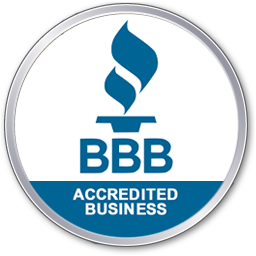Whether you are preparing to take on a small renovation or a large construction project, lead exposure is a necessary consideration that can pose several potential short- and long-term health risks. Therefore, it’s important that you take the proper precautions to protect yourself and anyone else involved.
According to the Environmental Protection Agency (EPA), 87% of homes built before 1940 contain some lead-based paint, while 24% of homes built between 1960 and 1978 contain some lead-based paint. Because lead paint was so popular for so long, contractors and property owners must be aware of the risks and how to mitigate them.
Lead testing plays an integral part in protecting you and your team from potential hazards. Understanding how to test for lead in commercial construction and renovations will ensure compliance with local regulations and the safety of those on-site. This guide will cover best practices when working in environments that may contain lead and how to minimize the risk of exposure for those involved.
What Are the Hazards Associated with Lead?
Lead has been used in paint and water pipes for decades, but it wasn’t until the 1970s that the potential harms of lead exposure were unveiled. Lead exposure occurs when you come into contact with lead by touching, swallowing, or breathing in the material or its dust.
Some of the potential health complications associated with lead include:
- Damage to the brain and nervous system
- Slowed growth and development in children
- Heart complications
- Fatigue
Lead can be harmful to adults, but it is particularly dangerous to children, who absorb lead into their bodies more easily. Still, anyone at any age should be conscious of the risks.
Exposure often happens when removing materials from the home or renovating a space. You can increase the chance of exposure by removing paint from surfaces previously coated with lead-based paint. Fortunately, you can mitigate the risks of lead exposure by ensuring proper protocol and carrying out testing before working in an environment where lead may be present.
Testing Methods and Procedures for Lead
Lead can be present in more than just paint, so there are different methods for identifying lead in various areas. The process for identifying lead depends on the material and location.
Surface Testing for Lead Paint
Lead paint is the most common concern when beginning a construction or renovation project, so surface testing is a necessary strategy for identifying lead in a space. There are multiple methods you can use to test for lead paint, each with its own benefits and ideal applications, including:
- Lead test kits – Kits are designed to provide a positive or negative response regarding the presence of lead with at least 95% confidence.
- X-ray fluorescence (XRF) analyzers – An XRF meter will quickly estimate the quantity of lead in a material.
- Laboratory analysis – This method involves collecting a sample of paint, or other material, and sending it to a lab to be analyzed for lead presence.
When using a lead test kit, professionals will make sure to use a kit recognized by the EPA that complies with the Lead Renovation, Repair, and Painting (RRP) Rule and meets the established performance criteria.
Testing for Lead in Water
In addition to lead paint, you also have to consider the risk of lead pipes, which can cause lead to leach into the water flowing from the taps. Regular water lead contamination testing is an important part of the construction process, especially in new projects, in case lead pipes are present. Lead pipes are used in every state, so this is a necessary consideration to make.
To test for lead in water during construction, the process will look like this:
- Collect a sample of the water to be tested
- The sample will be sent to the laboratory for analysis
- The lab will interpret the results and send their findings back
Similar to surface testing, water testing kits are also available for identifying contaminated water.
Testing for Lead in Soil
Despite the use of lead in paint and pipes, lead is still a naturally occurring element in the Earth’s crust. Between its natural presence in the earth and contamination of the soil from materials like paint, metal and pipes, lead can build up in the soil in high quantities.
If lead builds up in large amounts, it can be toxic to humans when they interact with contaminated soil through gardening, walking barefoot, or eating produce grown in the area. Therefore, any construction project should include lead testing in soil.
Similar to water and paint testing, soil testing is primarily conducted through laboratory analysis. In all of the above methods, it’s essential to send the sample to a reputable and accredited laboratory for accurate testing. It’s best to contact a laboratory recognized by EPA’s National Lead Laboratory Accreditation Program.
Lead Testing Requirements and Legal Obligations
Before beginning a construction or renovation project, you must have an understanding of any regulations and legal obligations to ensure your project remains in compliance and avoid legal conflicts.
Regulatory Guidelines for Lead Testing
The EPA is the most significant governing body that establishes regulations regarding lead testing. The most applicable piece of regulation regarding lead is the Lead Renovation, Repair, and Painting Program (RRP), which establishes guidelines that any projects that disturb lead paint must be performed by lead-safe certified contractors. These guidelines must be followed by contractors, house flippers, and homeowners who rent out their homes.
The RRP does not require that you test for lead. However, the EPA legally requires that anyone conducting a risk assessment is properly trained and certified under an accredited program.
The EPA also establishes guidelines for lead testing kits to designate whether they meet strict requirements for accuracy and reliability in testing lead. There are three EPA-recognized lead testing kits.
Compliance with National and Local Regulations
The EPA is the guiding agency for regulations regarding lead management, as most local and state agencies follow its established guidelines.
Some important considerations to make include:
- Under the RRP program, contractors must have a report certifying that lead-based paint is not present on a property, and they must retain the records for three years after the completion of a renovation.
- Many state and local agencies, like the Oregon Department of Environmental Quality, have their own requirements regarding the proper disposal of lead and lead paint.
- Local agencies may have additional regulations, so be sure to consult them regarding any other compliance requirements.
OSHA Standards for Lead Exposure in Construction
In addition to local and national environmental regulations, if you are an employer, you must be aware of standards regarding lead exposure for construction workers. The Occupational Safety and Health Administration (OSHA) requires the following protections at a minimum:
- Hazard determination and exposure assessment
- Medical surveillance and provisions for medical removal
- Job-specific compliance programs
- Engineering and work practice controls
- Respiratory protection
- Protective clothing and equipment
- Hygiene facilities and practices
- Recordkeeping
Remember that there may be legal ramifications for non-compliance with regulations, which can include fines and penalties. Understanding the legal obligations beforehand will enable you to avoid penalties, lawsuits, and reputational damage.
Conducting a Lead Risk Assessment
A lead risk assessment is a comprehensive, preliminary on-site investigation into whether lead is present in a space. During this assessment, an expert will investigate the presence, type, severity, and location of lead hazards. This process may include paint testing, dust and soil sampling, and a visual evaluation. This assessment will determine if more in-depth testing measures may be necessary.
The risk assessor will provide you with a written report of their findings. They can also assist you in deciding whether lead abatement is necessary for eliminating the hazards in your home entirely.
Mitigation Strategies for Lead Hazards
If lead is present in a space or there is a risk during a renovation or construction, then it is essential to have strategies in place to prevent its spread and protect everyone involved in the project. The following are some mitigation strategies and best practices for managing lead hazards.
1. Maintaining Lead Hazard Control and Remediation Measures
If lead is present in a space, the number one priority is controlling the hazard so that it does not spread. In this case, you should contact certified and trained professionals, who will take the following steps:
- Encapsulation – Contain the hazard by working in one area at a time and removing all objects from the work area.
- Enclosure – Tightly seal the area, including the floor, ceiling, walls, vets, and windows.
- Removal – Remove any lead-contaminated materials following careful disposal protocol.
2. Implementing Safe Work Practices and Engineering Controls
Whether you are working in an area with lead or suspect that it is a possibility, you should be prepared to take safety precautions to protect the health and well-being of you and your team.
Safety measures to take include:
- Containment – If you find lead in a room, take one area at a time and contain each area before beginning work so that lead or dust cannot escape.
- Ventilation – During any construction project, opening a window to the outside will provide fresh air to breathe and allow potential hazards to escape the room.
- Hygiene – After working around lead or other materials, place all lead-contaminated clothes to be washed, then shower and wash your hair to remove any potential contaminants.
3. Providing Personal Protective Equipment (PPE) for Lead-Related Work
Lead can be absorbed through the skin, inhaled through dust or fumes, and swallowed. As a result, it’s essential to have the right equipment to protect you and any workers on the job site.
Some of the proper PPE you should use includes:
- Disposable coveralls
- An N-100 Respirator
- Disposable shoe covers
- Goggles
- Gloves
Lead can be difficult to notice as it does not have an odor, and small particles are difficult to see. Wearing sufficient PPE when at risk for lead exposure is vital for protecting you against potentially unnoticed risks.
4. Ensuring Proper Waste Management and Disposal
The final step in protecting yourself and property owners from lead contamination is ensuring all materials are disposed of properly. Follow a careful waste management process to avoid contamination and remove all potential contaminants from the space.
To ensure a safe disposal process, take the following steps:
- Seal the floor, ceilings, and walls during the construction, and then remove and throw away all sealing materials when the job is done
- Remove any materials that may contain lead
- Use a high-efficiency particulate air (HEPA) filter throughout the process to catch any airborne lead particles.
- Clean all tools used for the job
- Dispose of PPE before leaving the job site
Navigating Lead Testing Requirements in Commercial Construction
Lead testing poses additional challenges for commercial construction projects as it involves larger-scale projects, a greater number of stakeholders, and a wider variety of building uses. When testing for lead in a commercial construction project, be sure to do the following.
Plan and Budget for Lead Testing
Given the hazards and the legal requirements surrounding lead, commercial projects must consider lead testing from the start. Lead testing should be built into the plan for the project, including the project schedule and the budget. This planning should also account for the proper PPE and any other tools needed to protect those involved in the project.
Collaborate with Qualified Professionals
If you do not have experience working with lead, you should leave any testing and removal to the experts, as they will know how to handle lead properly and comply with local regulations. Be sure to contact professional help and remain in communication with them throughout the project.
Verify that you work with a team that has experience and certifications for proper lead testing. For example, our skilled and certified team at Alpha Environmental has 21 years of experience supporting property owners and commercial operations in identifying and mitigating the risks of lead.
Ensuring Project Safety and Compliance
Commercial construction operations are responsible for mitigating contamination, maintaining the safety of their employees, and ensuring a safe result on the job site. To ensure project safety and compliance, you should also take the following steps:
- Develop a lead testing plan – A plan will enable you to determine how you fit testing into your construction schedule. This plan should include scope, schedule, sample locations, and testing methods.
- Train and educate workers on hazards and safety precautions – Employers should ensure all workers understand lead hazards, how to handle risks safely, and how to use PPE. Consider conducting regular training sessions over the duration of a project to ensure everyone is on the same page.
- Perform regular monitoring and periodic reassessment – Some areas of a project may be at risk for lead while others may not. Throughout the project, you should perform ongoing assessments of soil, water, and dust in case new hazards arise.
- Maintain documentation for compliance – Recordkeeping is a necessity for at least three years after a renovation. The RRP rule requires keeping records of reports certifying that lead-based paint is not present, records related to the distribution of the lead pamphlet, and documentation of compliance with regulations, similar to this sample form.
Cover Your Bases with Alpha Environmental
Given the potential health risks and common presence of lead, it’s a necessary consideration before beginning any construction or renovation project. Prioritizing lead testing, compliance, and safety will ensure the health and well-being of everyone involved.
At Alpha Environmental, we carry out lead testing to give you confidence and peace of mind throughout your construction or renovation project. We have the experience and equipment to identify lead-contaminated water, soil, and paint, helping you maintain a safe work environment. If we discover lead-based paint, we’ll even take steps to remove it.
We have over 20 years of experience supporting customers in the Portland area in keeping their homes and businesses safe from environmental contaminants. For assistance with lead testing in Portland, Oregon, contact Alpha Environmental today.




